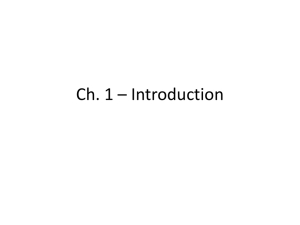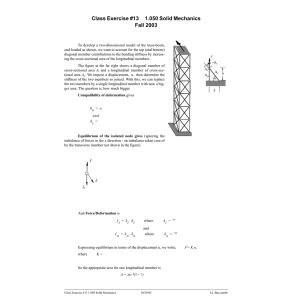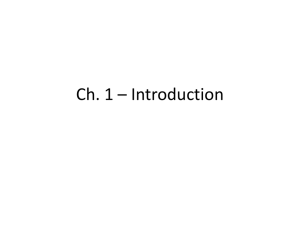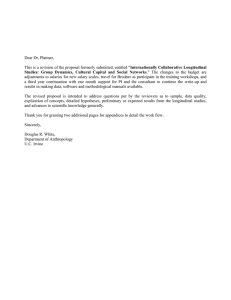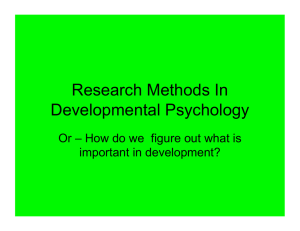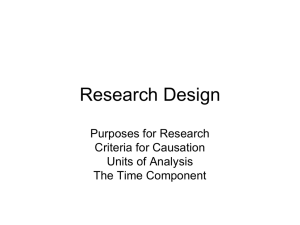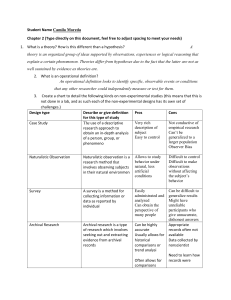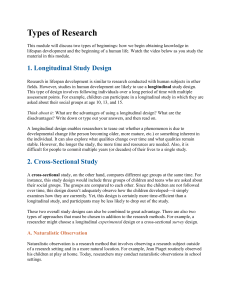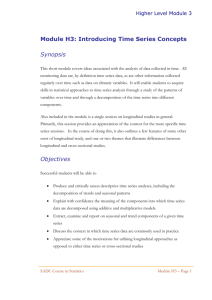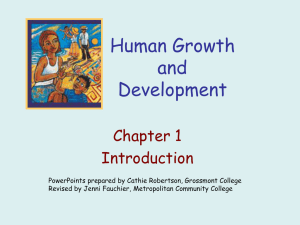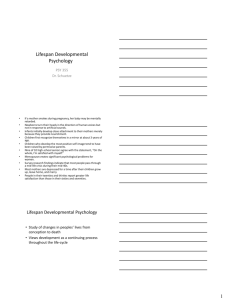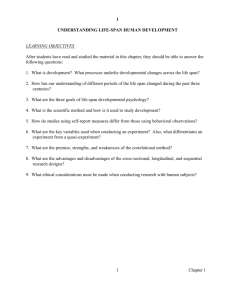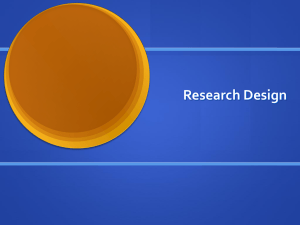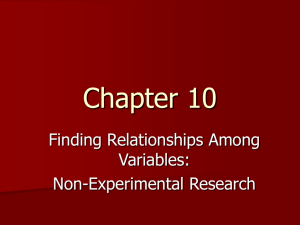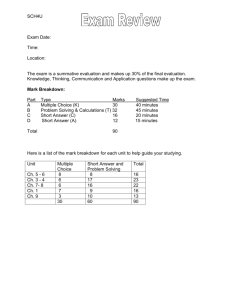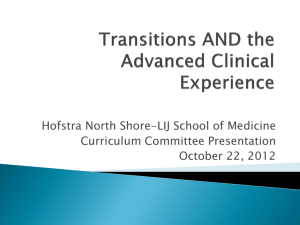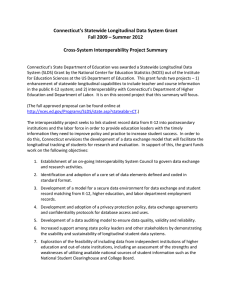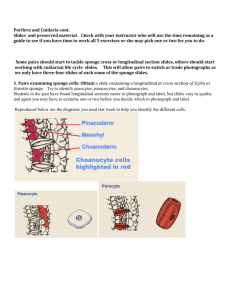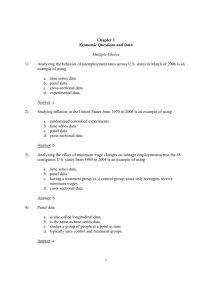Health Psychology: Straub Chapter 2
advertisement
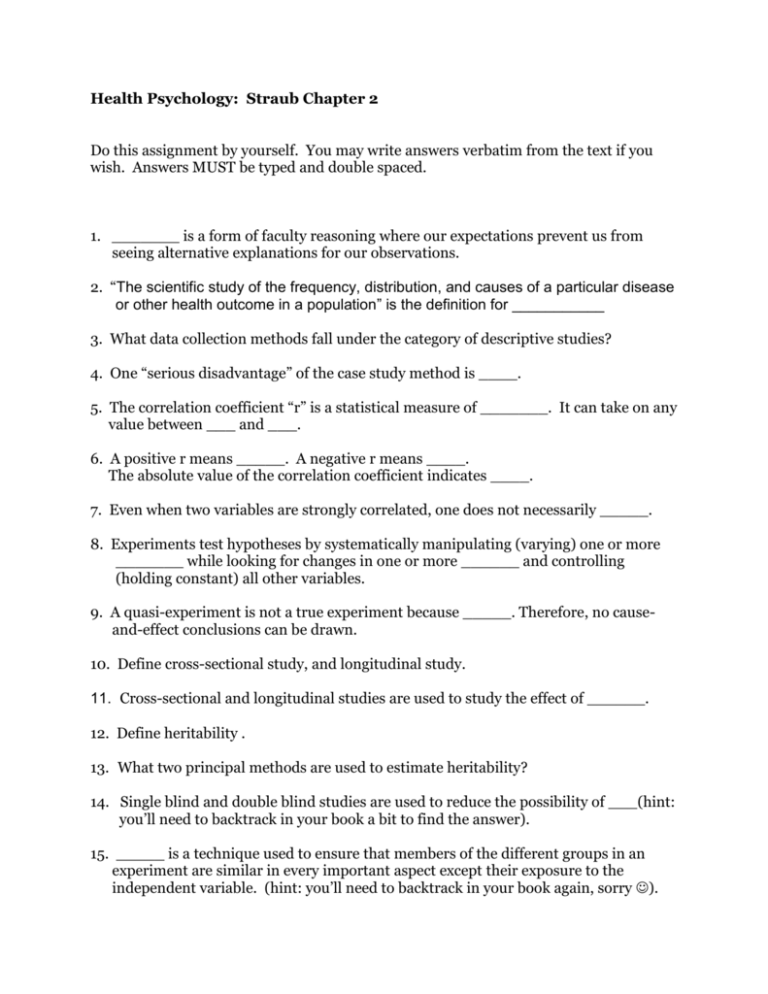
Health Psychology: Straub Chapter 2 Do this assignment by yourself. You may write answers verbatim from the text if you wish. Answers MUST be typed and double spaced. 1. _______ is a form of faculty reasoning where our expectations prevent us from seeing alternative explanations for our observations. 2. “The scientific study of the frequency, distribution, and causes of a particular disease or other health outcome in a population” is the definition for ___________ 3. What data collection methods fall under the category of descriptive studies? 4. One “serious disadvantage” of the case study method is ____. 5. The correlation coefficient “r” is a statistical measure of _______. It can take on any value between ___ and ___. 6. A positive r means _____. A negative r means ____. The absolute value of the correlation coefficient indicates ____. 7. Even when two variables are strongly correlated, one does not necessarily _____. 8. Experiments test hypotheses by systematically manipulating (varying) one or more _______ while looking for changes in one or more ______ and controlling (holding constant) all other variables. 9. A quasi-experiment is not a true experiment because _____. Therefore, no causeand-effect conclusions can be drawn. 10. Define cross-sectional study, and longitudinal study. 11. Cross-sectional and longitudinal studies are used to study the effect of ______. 12. Define heritability . 13. What two principal methods are used to estimate heritability? 14. Single blind and double blind studies are used to reduce the possibility of ___(hint: you’ll need to backtrack in your book a bit to find the answer). 15. _____ is a technique used to ensure that members of the different groups in an experiment are similar in every important aspect except their exposure to the independent variable. (hint: you’ll need to backtrack in your book again, sorry ). 16. _____refers to the number of cases of an unfavorable health outcome in a given group of people at a given time. _____ refers to the number of deaths due to a specific cause in a given group of people at a given time. 17. ___________ = the number of new cases of a disease or condition that occur in a specific population within a defined period of time ____________ = the total number of diagnosed cases of a disease or condition that exist at a given time 18. In epidemiological research, a __________ study compares people with a certain disease to people without – looking at their backgrounds in an effort to identify reliable differences between them which could account for the disease. 19. In epidemiological research, a _________ study is a longitudinal study that follows a healthy group of people over time to see who gets the disease and who does not. 20. To pin-point cause and effect, epidemiologists rely on ____ 21. _____ is a quantitative technique that combines the results of many studies examining the same effect or phenomenon to establish consistent trends or results. 22. List the 6 basic conditions which must be met before one can infer cause and effect between a particular risk factor and a negative health outcome.
